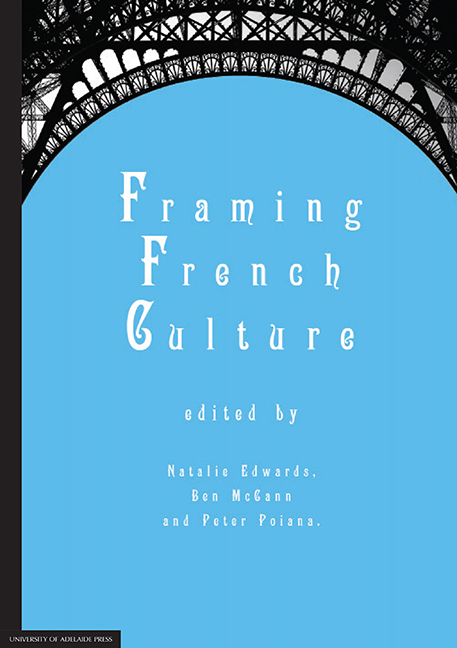Book contents
11 - Georges Bataille's Manet and the ‘strange impression of an absence’
from Part 4 - Artistic framings
Published online by Cambridge University Press: 05 February 2016
Summary
A propos de Manet, Mallarmé disait déjà: il n'importe qu'une oeuvre ne soit pas tout à fait achevée, ‘alors qu'il y a entre tous ses éléments un accord par quoi elle se tient et possède un charme facile à rompre par une touche ajoutée’. (Georges Bataille)
Il faut acquiescer à ce principe de ruine au coeur du nouveau le plus nouveau.
Il ne saurait être éludé ni dénié.
Et pourtant. Au coeur de cet acquiescement, alors qu'on saurait dire oui au principe de ruine, au-delà du savoir et de la vérité, justement, une place vide serait laissée — par Nietzsche tel que nous voudrions peut-être le lire: un lieu ouvert pour ce qui peut, par chance, peut-être, arriver encore. (Jacques Derrida)
A break with the times
In Manet, Georges Bataille focuses on the life and work of Édouard Manet, undoubtedly one of the greatest painters in the Western world and considered by some to be the founder of modern art. Bataille's text, which opens with a chronology of detailed biographical and historical information, was originally published with some black-and-white reproductions in 1955 by Albert Skira Editions and now appears in volume 9 of his Œuvres complètes after Lascaux ou la naissance de l'art. The juxtaposition of Manet with this piece on the birth of art is not without significance, as Bataille examines the artist's extraordinary status at the dawn of a new era. The richness and variety of Manet's canvases have been studied in depth in a multitude of publications over the years, including by eminent authors such as Zola, Baudelaire, Mallarmé, Valéry, Malraux, T.J. Clark and recently Vitoux, to name only a few of his critics. Identifying as one of the great discontinuities in the episteme of Western culture the one which marks the threshold of modernity at the beginning of the nineteenth century, Foucault reminds us also that Manet is credited with changing modes of representation and techniques in art; that this painter of the nineteenth century brought about a major break, for example through the use of colour and light, making possible not just Impressionism but also no doubt movements well beyond it.
- Type
- Chapter
- Information
- Framing French Culture , pp. 231 - 256Publisher: The University of Adelaide PressPrint publication year: 2015



